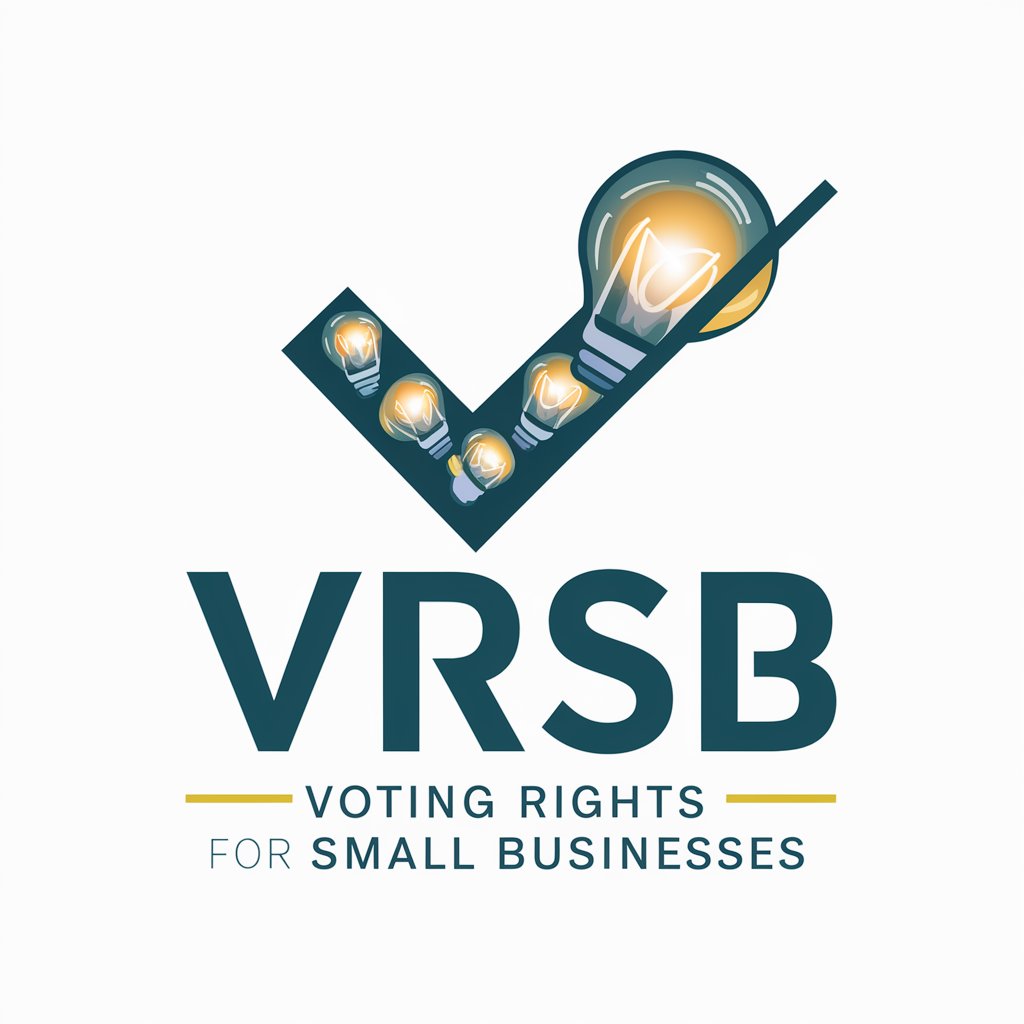Voting Rights for Small Businesses - Small Business Voting Rights Management

Hi! Let's navigate voting rights for your small business.
Empowering small businesses in investor democracy
What stage is your business currently in, and what are your main concerns about voting rights?
Which industry does your startup operate in, and how do you plan to manage investor expectations regarding voting rights?
What specific priorities do you have when negotiating voting rights with potential investors?
How do you intend to prepare for meetings with investors concerning voting rights proposals?
Get Embed Code
Overview of Voting Rights for Small Businesses
Voting Rights for Small Businesses is designed as a specialized assistant to aid founders and co-founders of small businesses and startups in understanding and managing voting rights during investor negotiations. The primary focus is on providing strategic guidance for creating a balanced and effective voting rights structure without delving into legal or financial advice. This platform offers insights into how investors evaluate fairness in voting rights and aims to equip business owners with the knowledge to navigate these discussions effectively. For instance, a startup looking to raise its first round of venture capital would benefit from understanding how different classes of shares and the allocation of voting rights can impact future governance and founder control. The assistant would offer guidance on preparing for investor meetings, what documentation to present, and tips for negotiating a fair voting rights agreement. Powered by ChatGPT-4o。

Core Functions of Voting Rights for Small Businesses
Strategic Advice on Voting Rights Allocation
Example
Guidance on creating voting rights structures that balance founder and investor interests, including the implications of preferred shares vs. common shares.
Scenario
A tech startup negotiating with angel investors wishes to retain decision-making control while offering equity. The assistant could suggest structures that allocate voting rights primarily to common shares held by founders, while offering preferred shares to investors with specific financial rights but limited voting power.
Preparation for Investor Meetings
Example
Checklist of documents and arguments to present a compelling case for the proposed voting rights structure.
Scenario
A small business seeking seed funding is preparing for a pitch to a group of venture capitalists. The assistant provides a list of key documents, such as cap tables and governance agreements, and advises on how to articulate the fairness and strategic advantages of their voting rights proposal.
Negotiation Tactics and Strategies
Example
Tips and strategies for negotiating with investors, focusing on maintaining a fair distribution of voting rights.
Scenario
Founders are in the late stages of negotiation with potential investors who are pressing for more voting rights. The assistant offers tactics for compromise, such as creating different classes of shares with specific rights attached, ensuring the founders maintain control over key decisions.
Target User Groups for Voting Rights for Small Businesses
Startup Founders and Co-founders
Individuals in the early stages of establishing a business who are navigating the complexities of equity distribution and investor relations. These users benefit from understanding how to structure voting rights to maintain strategic control while attracting investment.
Small Business Owners Seeking Investment
Owners of small but established businesses looking to expand through external funding. They benefit from guidance on revising their governance structures to accommodate new investors while safeguarding their own interests and vision for the company.

How to Use Voting Rights for Small Businesses
Step 1
Visit yeschat.ai for a free trial without the need for ChatGPT Plus or logging in.
Step 2
Identify your business stage and industry to tailor the advice to your specific needs.
Step 3
Clarify your key concerns regarding voting rights, focusing on areas like equity distribution, decision-making processes, and investor relations.
Step 4
Utilize the tool to generate customized guidance on negotiating and structuring voting rights with investors.
Step 5
Apply the recommendations in your investor meetings and documentation to ensure a balanced and effective voting rights structure.
Try other advanced and practical GPTs
The Secret of Kangaroo Island: Australia
Embark on a legendary treasure hunt in Australia.

Cyber Crypto Quest: Prague 2090 (Adventure GAME)
Unlock the digital mystery with AI.

Amsterdam Adventures
Embark on an AI-powered pirate adventure.

Hogwarts Sorting Hat
Discover Your Hogwarts House with AI Magic

Hola Spanish
Master Spanish with AI-powered lessons

Spanish Tutor
Master Spanish with AI-powered Tutoring

Image Prompt Optimiser
Crafting Visuals with Precision

Blackjack Bot
AI-powered Blackjack Strategy Mastery

Blackjack Buddy
Sharpen Your Game with AI-Powered Strategy

Blackjack Ace
Maximize your Blackjack wins with AI-powered strategy.

Resume & CV Tailor: Enhance Interview Odds🔥
AI-Powered Resume Tailoring for Success

NovarGPT(INTJ)
Rational insights for complex decisions

FAQs about Voting Rights for Small Businesses
What are voting rights in the context of small businesses?
Voting rights in small businesses refer to the rights allocated to business owners and investors to vote on key decisions affecting the company's future, such as mergers, acquisitions, or changes in the business structure.
How can I ensure fairness in voting rights for all investors?
Fairness can be ensured by establishing clear, proportionate voting rights aligned with capital contribution, implementing protective provisions for minority investors, and maintaining transparent decision-making processes.
What documentation is important when negotiating voting rights?
Essential documents include the shareholder agreement, company bylaws, and any investment agreements, which outline the voting structure, rights, and obligations of each party.
How do changes in voting rights affect company control?
Changes in voting rights can shift control dynamics, potentially leading to different outcomes in strategic decisions. It's crucial to align voting rights with long-term business goals and investor expectations.
Can voting rights be adjusted after initial agreements?
Yes, voting rights can be renegotiated and adjusted, especially in response to changes in the business such as new funding rounds, shifts in ownership, or evolving strategic objectives.
